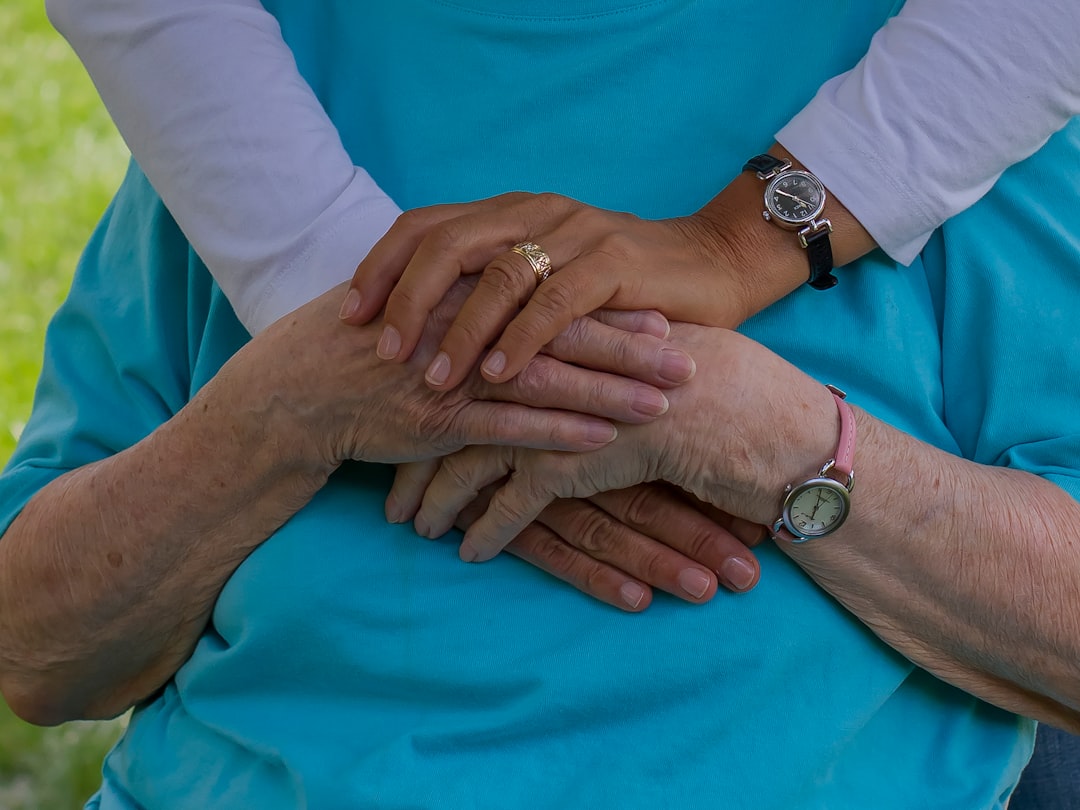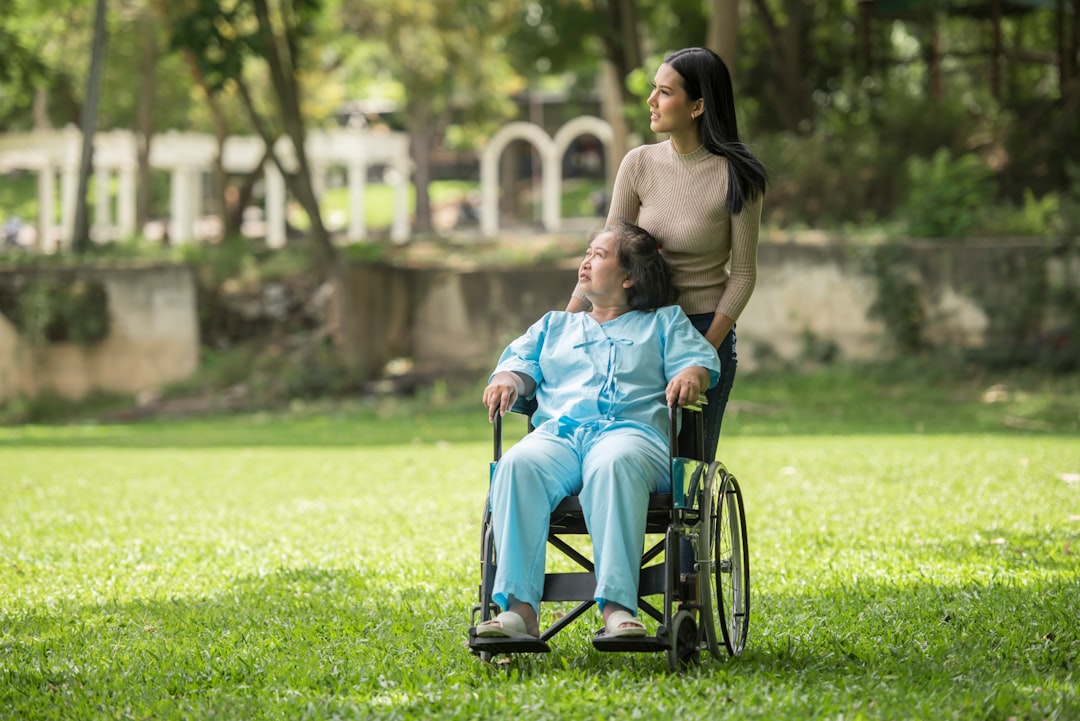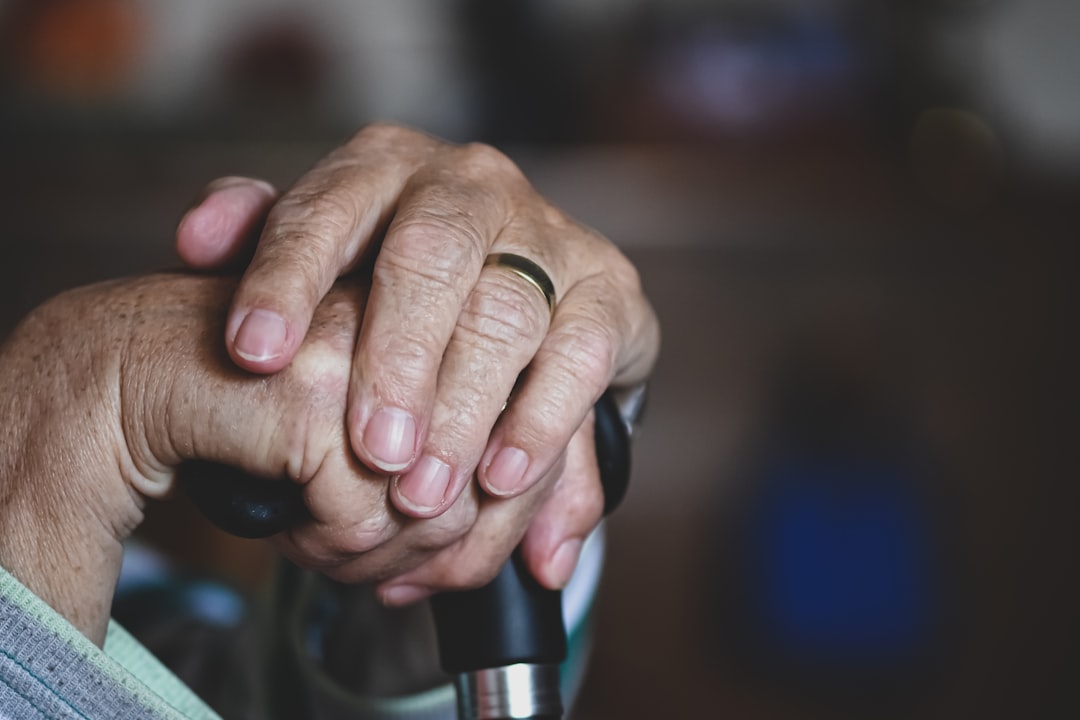

Engage prospects with a scan and streamline customer engagement with FREE QR code marketing tools by Sona – no strings attached!
Create a Free QR CodeFree consultation

No commitment

Engage prospects with a scan and streamline customer engagement with FREE QR code marketing tools by Sona – no strings attached!
Create a Free QR CodeFree consultation

No commitment
Caregiver support services face growing pressure to deliver effective, timely, and culturally responsive care as demand for home care, adult day services, and elder support solutions rises. Yet, modernizing is often slowed by obstacles: missing high-value prospects due to fragmented intake, limited visibility into who truly engages with services, and both families and staff forced to depend on paper surveys or manual feedback loops. These inefficiencies slow response times, hinder real-time improvement, and ultimately risk both patient engagement and service quality, a trend mirrored by the QR code comeback in hospital marketing.
QR codes in marketing now offer a fresh solution, seamlessly linking offline caregiving with instant, actionable digital engagement. For those guiding senior care marketing, home care operations, or adult day program delivery, QR codes create accessible, app-free moments that transform printed handouts and medication packaging into dynamic engagement and feedback channels. This approach helps surface who is interacting with materials, reduces the burden on caregivers to manually report issues, and ensures organizations do not lose sight of critical engagement signals.
This article explores how strategic use of QR codes elevates caregiver support services by overcoming common frustrations, enabling real-time feedback collection, surfacing invisible engagement opportunities, and driving more inclusive, data-driven improvement, enhancing outcomes for both organizations and those they serve.

Many caregiver support providers struggle with low survey response rates and incomplete feedback when relying on paper or verbal prompts, often leading to missed opportunities for intervention and a lack of actionable insights. QR codes bridge these gaps by creating frictionless digital touchpoints directly in the caregiving environment, empowering immediate feedback where and when it matters most.
Start by mapping the analog processes that slow you down. Replace clipboards, long paper forms, and difficult-to-return mailers with simple QR-enabled moments placed right where caregivers and families make decisions: on appointment cards, medication sheets, and handouts. When someone scans, they access a short, clear form like a google forms QR or a one-click rating that routes to your team in real time. This switch reduces staff data entry, shortens the time between issue detection and resolution, and creates a consistent channel for continuous improvement.
Modern QR code platforms like Sona QR make it simple to manage this workflow at scale. You can update destinations without reprinting, route different placements to tailored surveys, and monitor scan performance by location and time. The result is a smarter, more inclusive data collection process that meshes seamlessly with daily operations and continuously improves service quality.

Traditional feedback channels in caregiver support, whether in-person forms, mail-in surveys, or static sign-up sheets, often yield incomplete or outdated information. Caregivers and family members review service materials or attend events without formally identifying themselves, leaving providers blind to who is engaging and what needs are surfacing. These gaps make it difficult to prioritize follow-up, prove program impact, or demonstrate quality improvement, including patient documentation workflows.
QR codes transform this scenario by enabling instant, app-free input directly from physical materials. A simple scan from a printed handout, medication sheet, or event flyer can trigger an action such as reporting a concern, requesting a callback, or submitting a short satisfaction score. The immediacy is crucial: caregivers already juggle time-sensitive tasks, and a scan takes seconds. Organizations can detect and address urgent concerns sooner, reduce escalation risk, and shape services around real-world feedback.
Dynamic QR codes add additional value by allowing rapid updates to content or forms without reprinting. As needs evolve, you can shift a general survey to an escalation form, add a safety resource, or update language to reflect regulatory changes. QR scans are inherently trackable, which means you can see when and where engagement happens and which materials drive action. This visibility connects physical touchpoints to downstream workflows, supports continuous improvement, and helps teams prioritize high-impact interventions. Create trackable QR codes to keep content flexible and measurable.

Caregiver support services benefit most from formats that convert everyday materials into structured, trackable inputs. Selecting the right destination for each use case ensures the highest participation and the most actionable data.
Dynamic codes are recommended for all care environments where content may change or where you need performance data over time. Static codes work for fixed resources like a PDF of fall prevention tips but limit your ability to optimize and track outcomes.
Caregiver support providers often miss growth opportunities because high-intent interactions happen offline and never make it into a CRM. Families read program literature, attend a workshop, or pick up a brochure, but there is no immediate next step or attribution trail. QR codes turn these moments into measurable engagement and follow-up. For examples, see senior care marketing ideas.
Look at the materials already in circulation and layer in clear, benefit-driven calls to action. For example, a home visit packet could feature a Scan to request equipment help code that triggers a routed task, while an adult day center entrance sign could invite Scan to share today’s pickup feedback, connecting to a two-question form. Over time, scan data will reveal which locations, media, and messages attract new clients or highlight areas for improvement. For sector-specific strategies, explore Sona QR’s healthcare insights.
When deployed thoughtfully, QR codes help organizations uncover invisible demand, prevent churn among current clients, and surface upsell opportunities for additional services like respite care, caregiver training, or transportation support.

Translating real-world engagement into digital workflows transforms operations and outcomes. Below are representative use cases that align with everyday caregiver interactions:
Each use case turns a static interaction into a guided digital journey. The immediate actions might be a form submission, a callback request, a resource view, or a care plan update. When tracked consistently, these scans surface patterns that inform staffing, training, and service design.
Every scan contains context: where the person was, what they were doing, and what they wanted. By assigning unique QR codes to different assets and locations, you can segment audiences automatically and tailor the next step to their needs. This changes anonymous interest into identifiable intent.
Think about your audiences: dementia caregivers, veterans and their families, adult children coordinating care remotely, and caregivers managing multiple conditions. Each group responds to different messages, requires different supports, and engages at different times. By tagging scans accordingly, you can nurture with relevance and respect.
Use Sona’s retargeting playbook to translate scan intent into high-impact outreach.
With Sona QR, each code becomes a smart entry point that automatically classifies engagement and sends it to your CRM or ad platforms. You can then use email, SMS, or even targeted paid media to reach caregivers with timely, helpful content that respects their stage and situation.
Caregiver support organizations often juggle multiple channels without a cohesive data thread. QR codes knit together print, events, community outreach, and digital content so every interaction is tracked and actionable. The key is to place codes where caregivers and families already engage and to pair each code with a clear next step.
For example, print brochures can drive to a short, mobile-friendly interest form, while event signage can route to on-site RSVP confirmation. Social media posts may complement these moments by featuring the same code for those who see materials online before attending in person. Over time, scan data reveals which channels work best for each community or program.
These integrations make offline interactions measurable and actionable. With a centralized platform such as Sona QR, you can manage codes across channels, monitor performance, and sync engagement to your CRM and analytics stack.
A strong QR campaign starts with clarity: what you want to achieve, where you will place codes, and how you will measure success. Use the steps below to move from idea to repeatable process.
Clarify the one outcome that matters most. For caregiver support services, this may be increasing home visit feedback, capturing adult day center check-ins, accelerating enrollment for a government-funded program, or routing safety concerns to the right staff within minutes. A narrow focus helps you design a destination that fits the moment and the audience.
Map intent to measurable goals. Define targets such as a 30 percent increase in response rate, a 48-hour reduction in issue resolution time, or a 20 percent lift in qualified inquiries from specific neighborhoods. These metrics will guide copy, placement, and follow-up.
Select dynamic QR codes for campaigns that require updates, testing, and analytics. Dynamic codes allow you to change the destination after printing, append UTM parameters, and view performance by placement. Static codes are fine for unchanging resources like a PDF of caregiver tips.
Consider the action you want to trigger. Forms and web links are most common for feedback and appointment requests, while SMS or email templates work well for urgent outreach. For consistent staffing support, vCards save key contacts with one tap.
Accessibility drives participation. Use high-contrast colors, generous sizing, and sufficient quiet space around the code. Add a short benefit-focused call to action such as Scan to share your visit feedback or Scan for free fall prevention tips. Always provide a short vanity URL as a backup.
Accommodate multilingual communities and older adults. Offer translations, plain language, and an option to request a phone follow-up if scanning is not feasible. A small visual frame or arrow can help scanners notice the code quickly in busy environments.
Place QR codes where they are most likely to be seen and used. Prioritize high-traffic locations and moments of decision: discharge papers, medication packaging, adult day entrances, workshop slides, and home visit packets. Keep calls to action consistent across materials to reinforce the behavior.
Tailor the message to the setting. For home care, emphasize safety and convenience. For adult day centers, highlight daily check-ins and quick pickups. For community outreach, spotlight eligibility tools and waitlist forms.
Analytics transform scans into insight. Use Sona QR or a similar platform to track scans by time, location, and device, then tie this data to conversion events such as form submissions or scheduled consultations. Monitor drop-off points and refine the destination content accordingly.
Iterate on placement, copy, and form length. Small changes such as rewording a call to action or moving a code higher on a page can significantly impact engagement. Share results with staff so they see the value of promoting scans and contributing to continuous improvement.

Caregiver support services often struggle to connect frontline engagement to operational outcomes and revenue impact. Without unified tracking, a surge in event attendance or an uptick in brochure distribution may never show up as additional inquiries, enrollments, or improved retention. QR analytics fill these gaps by tying every scan to a specific placement, time, and action.
At a minimum, you should track scan volume, unique scanners, conversion rate on the destination, and qualitative signals like common issues reported. Layer in location data to compare performance across centers or neighborhoods. Over time, these insights guide where to invest in outreach, which programs need messaging support, and where to adjust staffing or training.
Sona QR captures detailed scan data such as time, device, and placement, while Sona.com can help connect that offline engagement to downstream outcomes with identity resolution and revenue attribution. By linking scans to form fills, service consultations, and enrollments, teams can demonstrate program impact, justify budget, and continuously improve their offline-to-online funnel.
Scaling QR campaigns is about consistency, context, and clarity. The following practices improve scan rates, data quality, and overall impact while respecting the unique needs of caregiver communities.
Embed these practices into standard operating procedures and templates. The more predictable and visible your QR touchpoints are, the more likely families and staff will use them consistently, leading to stronger data and better outcomes.
For caregiver support services, QR codes are no longer just a convenience; they are a vital connection between analog care practices and data-driven improvement. Implemented thoughtfully, these touchpoints unlock real-time engagement, actionable insight, and a responsive service culture that benefits staff, families, and elders. Providers gain both transparency and flexibility while caregivers get a simple path to sharing needs and feedback, making missed opportunities a thing of the past.
Thoughtful integration of QR codes into caregiver support services enables faster feedback, clearer understanding of valuable audiences, and proactive response at every care stage. By embracing digital feedback and seamless engagement, organizations minimize the risks of incomplete data, missed opportunities, and disengagement, ultimately building stronger connections across home care, senior living, and support programs. Every touchpoint can become a catalyst for meaningful, measurable improvement. Start creating QR codes for free.
QR codes have transformed caregiver support services from traditional feedback collection into dynamic, real-time engagement tools. Whether it's enhancing caregiver communication, streamlining feedback gathering, or improving overall service quality, QR codes replace cumbersome processes with instant, mobile-friendly actions that capture valuable insights directly from caregivers and their families. Imagine having immediate access to honest, actionable feedback that helps you tailor support services precisely to their needs.
With Sona QR, you can effortlessly create dynamic, trackable QR codes that update instantly without the need to reprint materials. This means you can monitor engagement, respond swiftly to caregiver concerns, and continuously optimize your support programs based on real data. No missed feedback, no delays—just smarter, more responsive caregiver support.
Start for free with Sona QR today and transform every scan into meaningful improvements in caregiver services and satisfaction.
QR codes create frictionless digital touchpoints in caregiving environments that enable immediate feedback, reduce manual reporting, surface engagement opportunities, and integrate with CRM systems for real-time improvements.
QR codes offer app-free, instant engagement that increases feedback response rates, enhances safety monitoring, allows dynamic content updates, improves data tracking and attribution, and reduces operational costs.
By placing QR codes on appointment cards, medication sheets, and program materials, caregivers and families can quickly submit feedback or report issues, enabling faster detection, response, and continuous service improvement.
QR codes can be placed at adult day center entrances and check-in desks to capture daily check-ins, flag concerns like mobility or appetite changes, and create transparent records that support earlier risk identification and care adjustments.
QR codes enable timely reporting of safety concerns such as falls or medication side effects through easy scans that trigger nurse callbacks or escalation forms, ensuring quicker interventions and documented compliance with safety protocols.
Dynamic QR codes are recommended for campaigns requiring updates and analytics, while formats like web links, forms, vCards, SMS templates, and portal access can be selected based on the specific engagement or feedback need.
By assigning unique QR codes by program, location, and user type, organizations can segment audiences automatically, sync scan data with CRMs, and create nurture flows aligned to caregiver intent for targeted outreach.
Place QR codes on high-traffic and decision points such as discharge packets, medication packaging, adult day center signage, program brochures, community event materials, and home visit packets to meet caregivers and families in the flow of care.
Identify campaign intent and goals, choose the right QR code type, design for accessibility, deploy across key media with clear calls to action, and track and optimize performance using analytics and staff feedback.
Tracking scan volume, locations, and conversion rates ties offline engagement to operational outcomes, helps identify high-performing materials, triggers automated alerts for urgent issues, and integrates data with CRM systems for continuous improvement.
Use large, high-contrast codes with clear calls to action, provide short URLs as backups, offer multilingual versions, test scan readability in real conditions, and respect privacy by linking to data use policies.
QR codes replace paper forms and manual surveys with instant digital feedback channels, reducing data entry burden, speeding issue resolution, increasing feedback quality, and enabling real-time service adjustments.
Use Sona QR's trackable codes to improve customer acquisition and engagement today.
Create Your FREE Trackable QR Code in SecondsJoin results-focused teams combining Sona Platform automation with advanced Google Ads strategies to scale lead generation

Connect your existing CRM

Free Account Enrichment

No setup fees
No commitment required

Free consultation

Get a custom Google Ads roadmap for your business






Launch campaigns that generate qualified leads in 30 days or less.
